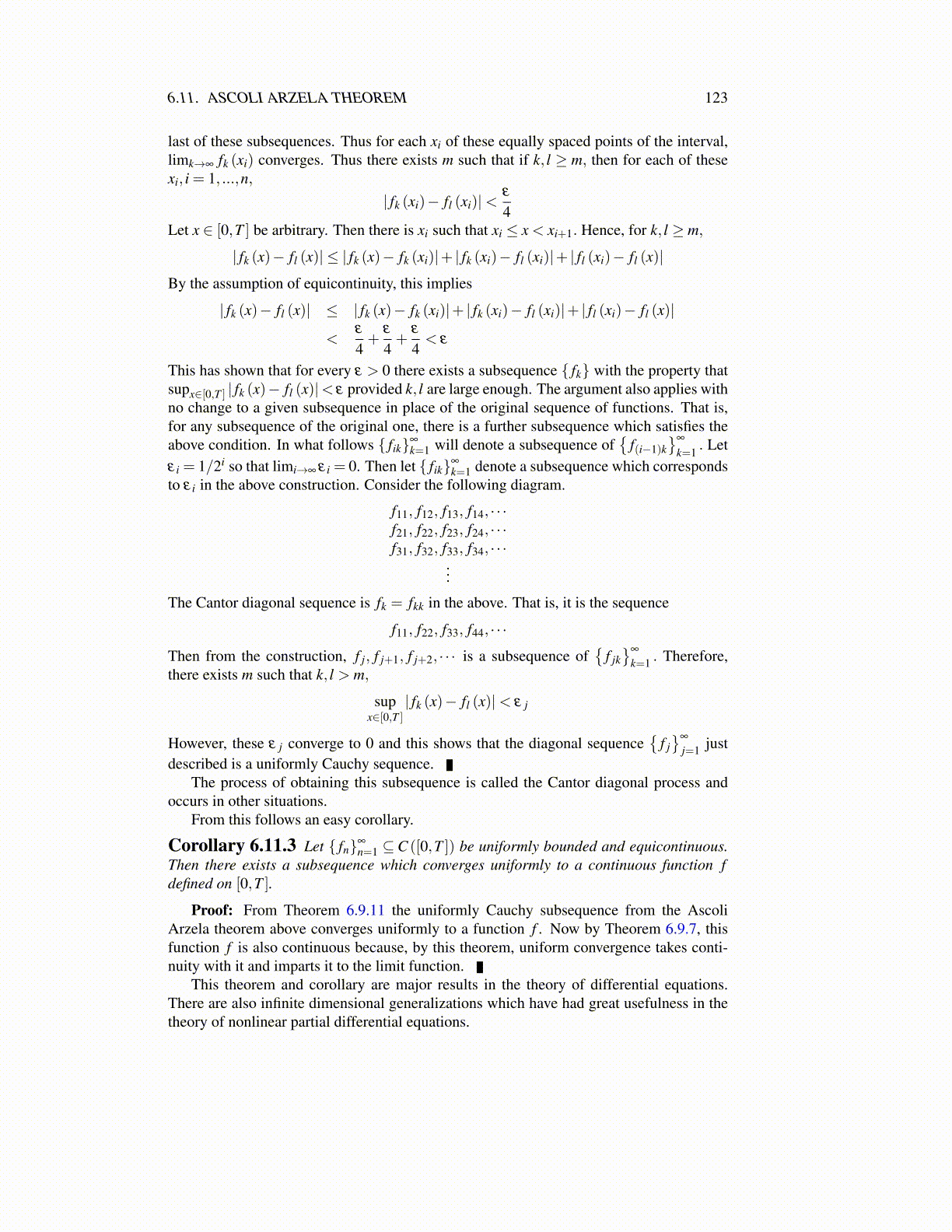
6.13. TIETZE EXTENSION THEOREM 123
where θ ([0,1]) = Q where Q is some sort of square or box, etc. Not surprisingly, there aregeneralizations. One generalization is to something called chainable continua.
6.13 Tietze Extension TheoremThis is about taking a real valued continuous function defined on a closed set in Fp andextending it to a continuous function which is defined on all of Fp. First, review Lemma6.0.7.
Lemma 6.13.1 Let H,K be two nonempty disjoint closed subsets of Fp. Then thereexists a continuous function, g : Fp→ [−1/3,1/3] such that
g(H) =−1/3, g(K) = 1/3,g(Fp)⊆ [−1/3,1/3] .
Proof: Let f (x)≡ dist(x,H)dist(x,H)+dist(x,K) . The denominator is never equal to zero because if
dist(x,H) = 0, then x ∈H because H is closed. (To see this, pick hk ∈ B(x,1/k)∩H. Thenhk → x and since H is closed, x ∈ H.) Similarly, if dist(x,K) = 0, then x ∈ K and so thedenominator is never zero as claimed. Hence f is continuous and from its definition, f = 0on H and f = 1 on K. Now let g(x)≡ 2
3
(f (x)− 1
2
). Then g has the desired properties.
Definition 6.13.2 For f : M ⊆ Fp→ R, define ∥ f∥M as sup{| f (x)| : x ∈M} .
Lemma 6.13.3 Suppose M is a closed set in Fp and suppose f : M→ [−1,1] is contin-uous at every point of M. Then there exists a function, g which is defined and continuouson all of Fp such that ∥ f −g∥M < 2
3 , g(Fp)⊆ [−1/3,1/3] .
Proof: Let H = f−1 ([−1,−1/3]) ,K = f−1 ([1/3,1]) . Thus H and K are disjoint closedsubsets of M. Suppose first H,K are both nonempty. Then by Lemma 6.13.1 there exists gsuch that g is a continuous function defined on all of Fp and g(H) = −1/3, g(K) = 1/3,and g(Fp)⊆ [−1/3,1/3] . It follows ∥ f −g∥M < 2/3. If H = /0, then f has all its values in[−1/3,1] and so letting g≡ 1/3, the desired condition is obtained. If K = /0, let g≡−1/3.
Lemma 6.13.4 Suppose M is a closed set in Fp and suppose f : M→ [−1,1] is contin-uous at every point of M. Then there exists a function g which is defined and continuous onall of Fp such that g = f on M and g has its values in [−1,1] .
Proof: Using Lemma 6.13.3, let g1 (Fp) ⊆ [−1/3,1/3] and ∥ f −g1∥M ≤ 23 . Suppose
g1, · · · ,gm have been chosen such that g j (Fp)⊆ [−1/3,1/3] and∥∥∥∥∥ f −m
∑i=1
(23
)i−1
gi
∥∥∥∥∥M
<
(23
)m
. (6.7)
This has been done for m = 1. Then∥∥∥∥∥(
32
)m(
f −m
∑i=1
(23
)i−1
gi
)∥∥∥∥∥M
≤ 1